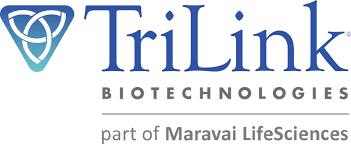
The promise of gene-editing therapies has passed the realm of scientific possibility to clinical reality. While DNA-altering treatments are considered relatively new and in the early commercial stages, over the next five years, GlobalData’s Drugs Database projects 29 drug launches in the genome editing space, with an anticipated market value of US $8.6bn in 2030.
That represents a compound annual growth rate (CAGR) of 118% over the next five years.

Discover B2B Marketing That Performs
Combine business intelligence and editorial excellence to reach engaged professionals across 36 leading media platforms.

Understanding the significance of gRNA
At the heart of this revolution lies the CRISPR-Cas system—a two-component genome editing tool consisting of the Cas enzyme and a guide RNA (gRNA). The gRNA is a short, synthetic RNA molecule that directs the Cas nuclease to a specific genomic location where editing is desired, enabling precise double-strand DNA breaks.
The targeted DNA break triggers the cell’s endogenous repair pathways, which can be harnessed to achieve precise genomic modifications. During this repair process, researchers can introduce specific insertions, deletions, or substitutions at the cut site. The use of highly pure gRNAs enables highly targeted genetic modifications with minimal off-target effects, significantly enhancing both the efficacy and safety profile of CRISPR-based therapeutic interventions. This precision targeting reduces the risk of unintended genomic alterations that could compromise cellular function or patient safety.
The ease of designing different gRNAs makes CRISPR a highly versatile and scalable genome editing technology, allowing researchers to target almost any gene. To redirect CRISPR to a new genomic location, researchers need only modify the spacer region of the gRNA while keeping the scaffold sequence unchanged, making it straightforward to reprogramme the system for different targets.
Appropriately designed, high-quality synthetic gRNAs provide critical molecular stability. More stable and precise gRNAs improve the ability to knock out, insert, or modify genes, supporting detailed studies of gene function and the creation of accurate disease models.
Scientists are currently targeting mutations that cause a wide range of diseases, from cancer and blood disorders to neurological conditions and others. So, as more gene-editing therapies win approvals from regulators and billions of dollars flow into gene-editing research, biopharma companies are recognising the significance of gRNA as the lynchpin to the successful development of these next-generation treatments.
CDMO partnership is crucial
The advancements in gRNA synthesis and customisation are enhancing the potential of CRISPR-based therapies in medicine. As trials and studies move toward the clinic, demand will grow for reliable partners who can deliver GMP-grade, chemically optimised and regulatory-compliant gRNA at scale.
“This is where TriLink has a unique advantage and we feel our business is at the nucleus of this pivotal moment, because we can help biopharma companies translate breakthrough science into life changing therapies,” says Cody Palumbo PhD, senior application scientist at US-based TriLink BioTechnologies, a Maravai LifeSciences company.
“Ensuring gRNA quality across research, preclinical, and GMP stages demands tight process control, validated analytical methods, and adherence to regulatory expectations. Gaps in any of these areas can lead to product inconsistency and increased clinical risk.”
He adds: “We have decades of experience and expertise in nucleic acid chemistry, and we are using this to advance solutions for the industrialisation of gRNA.”
TriLink is driving progress in several specific areas, including chemical modifications for stability. Key modifications include 2′-O-methyl and phosphorothioate linkages at the termini, which acts as the “armour” for the gRNA, boosting stability, reducing immunogenicity, and improving indel and homologous recombination frequencies in CRISPR-Cas9 systems.
TriLink also offers other modifications such as advanced modified bases for stability such as 2′-fluoros, 2′-O-methoxyethyl modifications, locked nucleic acids, and other advanced capabilities. Furthermore, TriLink is able to provide these chemistries for extremely long guide RNAs, such as those used for prime editing (pegRNAs).
Prime editing
Prime editing is a next-generation CRISPR technology that enables precise insertions, deletions and substitutions without requiring double-stranded breaks or DNA donor templates. This approach uses a modified Cas9 enzyme fused to a reverse transcriptase along with a specialised prime editing guide RNA (pegRNA). The pegRNA is similar to a standard gRNA but is significantly longer and more complex, often exceeding 150 nucleotides in length.
Unlike conventional sgRNAs, the pegRNA includes additional functional elements: a primer binding site and a repair template. In prime editing, the Cas9 enzyme creates a single-strand nick in the target DNA, while the fused reverse transcriptase uses the pegRNA’s template sequence to synthesise new DNA directly at the edit site.
This coordinated action allows the reverse transcriptase to “write” the desired genetic changes into the genome using the pegRNA as both a guide and template, eliminating the need for separate donor DNA molecules.
“pegRNA is a major advancement and potential future direction for CRISPR-based gene editing because they enable precise point mutations, insertions, and deletions, offering significantly more control than traditional gRNAs alone,” says Dr Palumbo, speaking about the challenges in gRNA design and how to ensure consistent gRNA quality in commercial manufacturing workflow in a webinar available to listen here.
“It is an incredible time in the evolution of medicine, with the tools emerging that offer the potential for scientists to target and correct genetic disease at their source. But it is also an expensive time for the biotech industry. To navigate this landscape, CDMOs like us will be the key to unlocking the potency of gene-editing technology like CRISPR.”
Read more about developments in cell and gene therapy and how specialist CDMOs can support the industry expedite trailblazing medical treatments in this whitepaper from TriLink. Download here.



